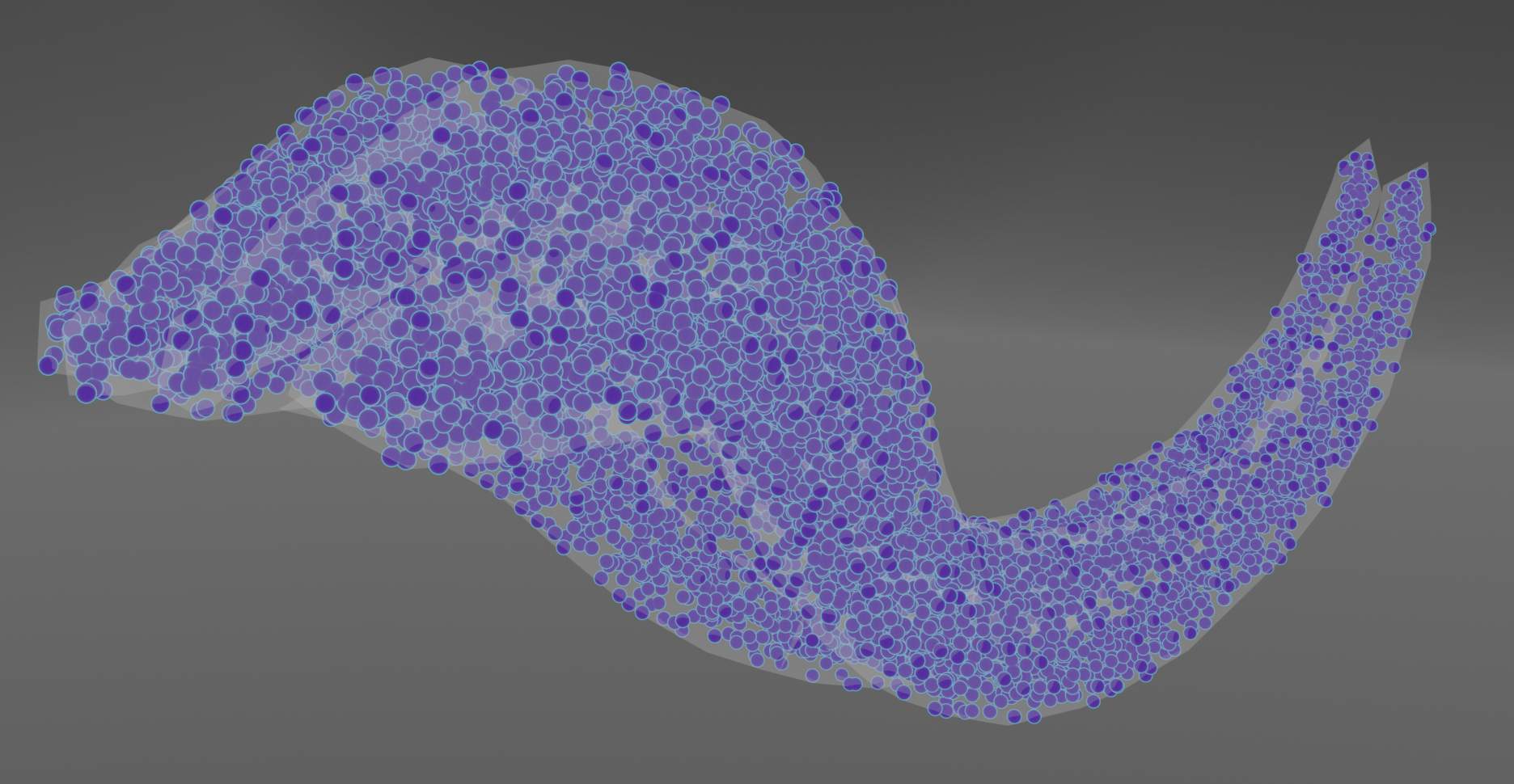
Visualizing Buzz Pollination
InfraVis User
Mario Vallejo-Marin (UU)
InfraVis Application Expert
Filip Berendt (KTH), Ingemar Markström (KTH)
InfraVis Node Coordinator
Mario Romero Vega (KTH)
Tools & Skills
Blender, Particle System/Solver, 3D Modelling and Animation, Physics Simulation
Keywords
Evolutionary, Biology, Bumblebee, Buzz, Pollination, Flora, EBC, Uppsala, University
Background
Pollination is crucial phenomenon in every ecosystem where flowers exist. There are many different species of flowers, and the differences also include how they procreate. What they all have in common is that the male sexual organ of the flowers (Anther) produce pollen, which in some manner ends up at another flower’s female sexual organ (Pistil), where it ends up producing viable seeds. The manner of how the pollen makes its journey to the pistil is something that varies widely between species. Some species rely on the weather to spread their pollen, while some others rely on the local fauna.
For some reason or another, some species of flower have evolved a mutual, exclusive relationship with a smaller subgroup of fauna in their ecosystem. One such case are the species in the Solanum genus. They have evolved hollow, tube-like anthers which shed ripe pollen inside these tubes. Because of this inaccessibility, typically only some species of bumblebees pollinate these flowers, and they do that by buzzing.
The mechanics of buzz pollination is quite simple. Ripe pollen sheds and pools within the anthers’ tube-like cavities, which is coaxed towards and ejected through a small opening at the tip of each anther when a bumblebee ‘buzzes’, at which point the bumblebee’s hair covered body catches the pollen. Then when the bumblebee has moved to another flower, it pollinates that new flower through contact with the pistil, in the usual fashion.
Buzz pollination is the exclusive manner of which these Solanum procreates without human intervention. Modern farming practices of using chemical treatment (pesticides) on meadows and farmland is effectively poisoning the bumblebees, which affects their behaviour and function. Bumblebees are evolutionary motivated to extract as much pollen as possible, in as short time as possible, because this pollen is an important part of their diet. They have to ‘buzz’ in the right way for each flower while they are extracting the nectar, and to do that, they adapt their buzzing based on the flower. Bumblebees exposed to these pesticides are much worse than the bumblebees that are not exposed at adapting their buzzing, and therefore get less pollen, which in turn means less pollination and food for the bumblebee, which in a bad cycle means less bumblebees in general.
Understanding buzz pollination and the negative effects of pesticides have on bumblebees helps the preservation of our surrounding ecosystems, informed political decision making, and sustainable farming. Mario Vallejo-Marin is the principal investigator, as well as our user, for this project. He is currently employed as a professor at the Evolutionary Biology Centre (EBC) at Uppsala University, as of writing.
Source(s) used: In the News – Vallejo-Marin Lab (plant-evolution.org)
Project Details
As part of Mario Vallejo-Marin’s research communication efforts, he wanted a video showcasing the current theory of how the ‘buzzing’ sets the pollen grains within the anther cavities in motion towards the ejection point. Because the anthers are opaque, and the video capturing needs to be very high-fidelity in the temporal domain, generating actual, real-world data to visualize virtually or a detailed video capture is currently not viable. Therefore, we opted for a pure simulation approach using Blender.
Mario had very high-fidelity 3D scans of anthers from the species Solanum Rostratum. These models had quite accurately represented the interior of the anther as well. We imported one of the models into Blender, and modified them for performance, and for visuals. Because the model was incredibly high-fidelity, it was prohibitively expensive to render and compute collision with, so we had to decimate the model with a factor of 0.01, reducing the amount of polygons from the realms of millions to tens of thousands. An important task was to render the anther in a manner that allowed the viewer to clearly see the pollen grains bouncing around inside, while also allowing the viewer to accurately see where the boundary lies. We decided to use a pure Fresnel Shader to achieve this.
To simulate the buzz interaction with the anther, we added a sine animation to the anther’s rotation with its base stem as the centre point, making it vibrate up and down. Consulting with the researcher, we got realistic amplitude and period values for simulating the buzz interaction.

For representing the pollen grains, we decided to use particle systems. Blender has native particle systems in its framework, but it was quickly apparent that it was insufficient for our needs. We needed the particles to be simulated as proper 3D objects with realistic collision and interaction physics. The native particle system does only approximation for these kinds of physics for performance reasons. Usually, when doing purely visual things with Blender, this is enough. But since we’re trying to simulate real-world physics, these approximations are not enough. Therefore, we opted for using an add-on called ‘Molecular+’. This add-on implements the option for proper particle solving to the native particle system.
To fill the interior of the anther with pollen grains, we generated a copy of the anther model, and removed parts of the model which didn’t make up its interior. This ‘interior volume’ could then be used to seed initial starting positions for each of the pollen grains. Because this seeding algorithm is not perfect, some pollen ended up outside the interior volume, and inside the anther wall. These stray pollen did not interfere with the simulation, and were quickly disposed of as soon as they hit the outer boundary of the anther wall.
As for the pollen grains themselves, according to the researcher, it makes sense to represent them as smooth spheres. The simulation runs with 10000 particles, to get visually significant results. To visually contrast them with the yellow anther color, we decided to give them an arbitrary color that does that. To visually distinguish them amongst themselves, we added a Fresnel border effect to the shading to also contrasts to the yellow anther color. Because the relative size of the pollen is so small, the visual representation of the pollen is scaled with a factor of 5. The computational representation of the pollen remains relatively true to the size of the anther.

With the simulation set up, the final task was to set up the camera animation for rendering the video frames. Since the video was requested by the researcher, he specified key frames and the desired transition between them, after which we implemented his wishes, and ran the rendering of the simulation. With the raw frames produced, it was a trivial task to convert those to a video.
